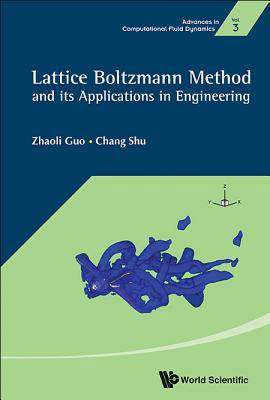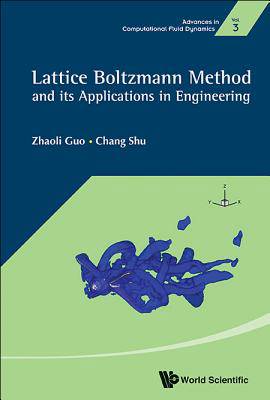
- Afhalen na 1 uur in een winkel met voorraad
- Gratis thuislevering in België vanaf € 30
- Ruim aanbod met 7 miljoen producten
- Afhalen na 1 uur in een winkel met voorraad
- Gratis thuislevering in België vanaf € 30
- Ruim aanbod met 7 miljoen producten
Zoeken
Lattice Boltzmann Method and Its Application in Engineering
Zhaoli Guo & Chang Shu
€ 230,45
+ 460 punten
Omschrijving
Lattice Boltzmann method (LBM) is a relatively new simulation technique for the modeling of complex fluid systems and has attracted interest from researchers in computational physics. Unlike the traditional CFD methods, which solve the conservation equations of macroscopic properties (i.e., mass, momentum, and energy) numerically, LBM models the fluid consisting of fictive particles, and such particles perform consecutive propagation and collision processes over a discrete lattice mesh.This book will cover the fundamental and practical application of LBM. The first part of the book consists of three chapters starting form the theory of LBM, basic models, initial and boundary conditions, theoretical analysis, to improved models. The second part of the book consists of six chapters, address applications of LBM in various aspects of computational fluid dynamic engineering, covering areas, such as thermo-hydrodynamics, compressible flows, multicomponent/multiphase flows, microscale flows, flows in porous media, turbulent flows, and suspensions.With these coverage LBM, the book intended to promote its applications, instead of the traditional computational fluid dynamic method.
Specificaties
Betrokkenen
- Auteur(s):
- Uitgeverij:
Inhoud
- Aantal bladzijden:
- 420
- Taal:
- Engels
- Reeks:
- Reeksnummer:
- nr. 3
Eigenschappen
- Productcode (EAN):
- 9789814508292
- Verschijningsdatum:
- 6/04/2013
- Uitvoering:
- Hardcover
- Formaat:
- Genaaid
- Afmetingen:
- 162 mm x 235 mm
- Gewicht:
- 725 g

Alleen bij Standaard Boekhandel
+ 460 punten op je klantenkaart van Standaard Boekhandel
Beoordelingen
We publiceren alleen reviews die voldoen aan de voorwaarden voor reviews. Bekijk onze voorwaarden voor reviews.











